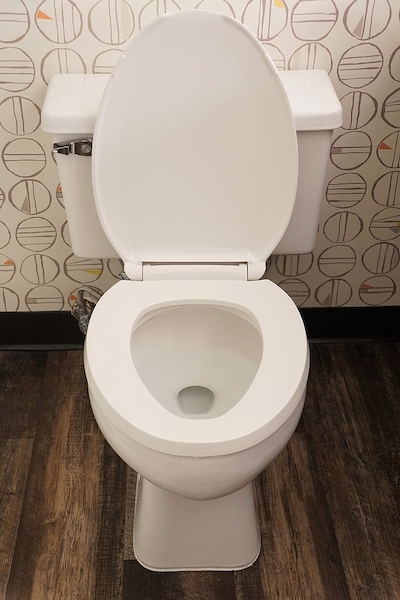When it comes to choosing the right toilet seat for your bathroom, you might think it’s a simple decision. However, with various materials available, such as wood and plastic, making the right choice requires a bit of thought. In this comprehensive comparison, we delve deep into the world of wood vs plastic toilet seats, exploring aspects like cost, comfort, ease of installation, and manufacturing methods. This article aims to guide you through making an informed decision, ensuring your bathroom is equipped with the best option for your needs.
Toilet seats are an essential part of any bathroom setup. While they might seem like a minor detail, the material of your toilet seat can significantly affect your bathroom’s look, feel, and functionality. Wood and plastic are two popular materials, each offering unique benefits and drawbacks. Whether you’re renovating your bathroom or simply replacing an old toilet seat, understanding the differences between wood and plastic is crucial.
Cost Comparison
- Wood Toilet Seats
- Generally more expensive due to the natural materials and the craftsmanship involved.
- Prices can vary widely depending on the type of wood and the finish.
- Plastic Toilet Seats
- Typically less expensive than wood, making them a budget-friendly option.
- Price varies with the quality of plastic and additional features like soft-closing lids.
Excerpt: “While plastic toilet seats are kinder to your wallet, wood seats offer a touch of luxury and durability that might be worth the extra cost.”
Comfort and Aesthetic Appeal
- Wood Toilet Seats
- Offer a warm and more comfortable seat, especially in colder climates.
- Available in various finishes and grains, adding a luxurious touch to any bathroom.
- Plastic Toilet Seats
- Feel colder to the touch, which might be uncomfortable in winter.
- Come in a wide range of colors and styles, allowing for easy customization.
Excerpt: “Choosing between the warm elegance of wood and the modern versatility of plastic can significantly affect your bathroom’s comfort and style.”
Ease of Installation
- Both wood and plastic toilet seats are relatively easy to install with basic tools. However, the weight of the seat can affect the installation process:
- Wood seats are heavier, possibly requiring more effort to position correctly.
- Plastic seats are lighter, making them slightly easier to maneuver and install.
Tip: “Regardless of the material, always follow the manufacturer’s instructions for the best installation results.”
Manufacturing Methods
- Wood Toilet Seats
- Made from either solid wood or a composite material with a wood finish.
- Manufacturing involves cutting, shaping, sanding, and finishing the wood to create a smooth and durable surface.
- Plastic Toilet Seats
- Typically made from thermoplastic materials or urea-formaldehyde.
- The manufacturing process includes molding the plastic into shape and adding features like soft-close mechanisms.
Excerpt: “The craftsmanship behind wood seats and the technology in plastic seats highlight the sophistication in modern bathroom fittings.”
Durability and Maintenance
- Wood Toilet Seats
- Can last many years with proper care, but are susceptible to scratches and moisture damage.
- Require regular cleaning with mild cleaners and may need refinishing over time.
- Plastic Toilet Seats
- Resistant to moisture and chemicals, making them easier to maintain.
- Less likely to scratch but can discolor and become brittle with age.
Tip: “For longevity, choose a seat that best suits your bathroom’s humidity levels and your willingness to perform maintenance.”
Environmental Impact
- Wood Toilet Seats
- Considered more eco-friendly if made from sustainably sourced wood.
- Biodegradable at the end of their lifecycle, though finishes may affect decomposition.
- Plastic Toilet Seats
- Less environmentally friendly due to the use of non-renewable petroleum products.
- Recyclable, depending on the type of plastic, but not biodegradable.
Excerpt: “Your choice between wood and plastic can reflect your environmental values and impact your bathroom’s eco-footprint.”
Conclusion
Choosing between a wood and plastic toilet seat involves weighing factors like cost, comfort, aesthetic appeal, ease of installation, durability, and environmental impact. Wood seats offer warmth and luxury but come with a higher price and maintenance needs. Plastic seats are budget-friendly, easy to maintain, and versatile in design but lack the natural appeal and warmth of wood.
Ultimately, the best choice depends on your personal preferences, budget, and bathroom style. By considering the points outlined in this comparison, you’re well-equipped to make an informed decision that ensures your bathroom is comfortable, stylish, and functional.
Remember, the right toilet seat can enhance your bathroom experience, so take the time
to choose wisely between wood and plastic. Your decision will not only reflect your style but also affect your comfort and the environment.










